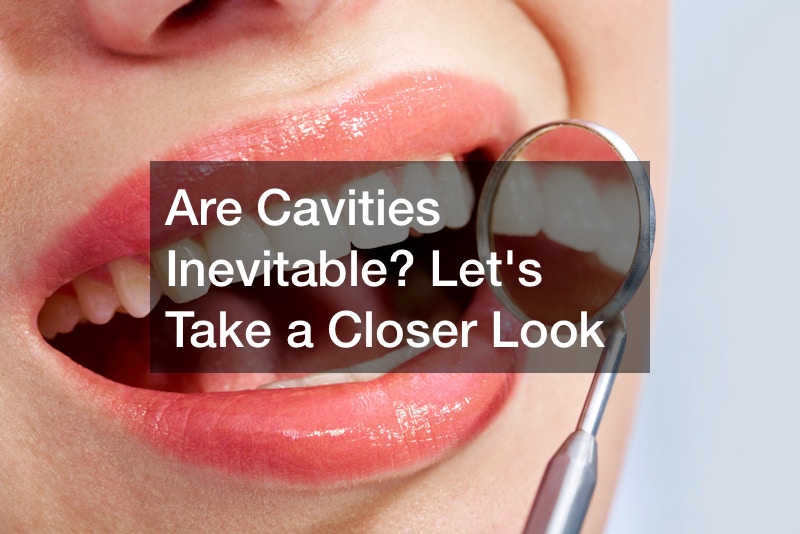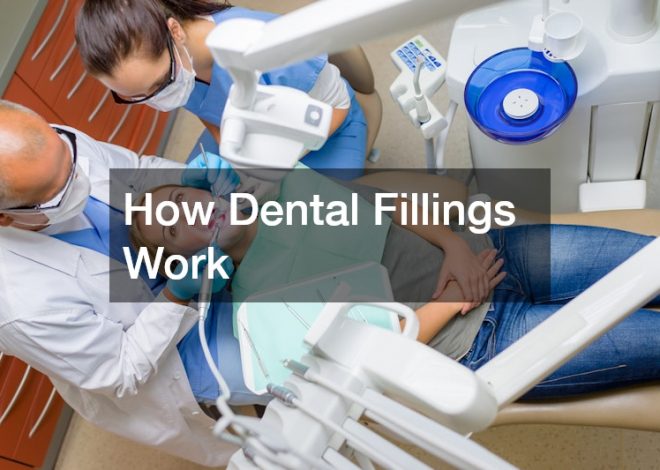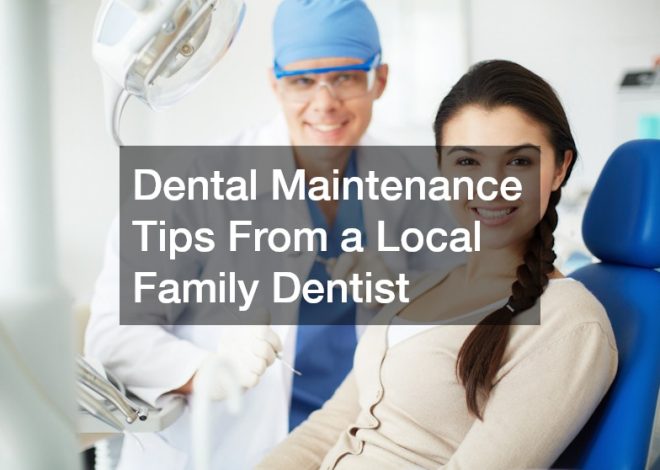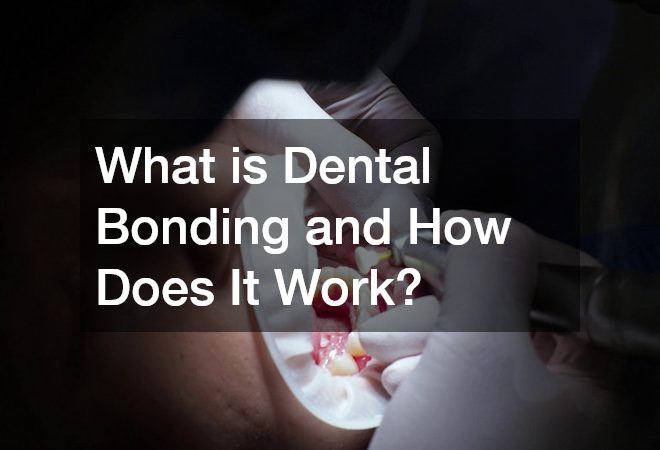
Are Cavities Inevitable? Lets Take a Closer Look

If you want to maintain the quality of your teeth, you must practice regular dental care. This can help keep cavities and dental problems away. However, visiting the dentist is only a part of your dental care. If you wonder if are cavities inevitable, continue reviewing this article for more information.
Visiting an Orthodontist When You’re Young

When you are wondering if are cavities inevitable for your children, it’s important to remember that early and regular dental care is important. Taking your child to local orthodontists is also critical while they’re young. The Orthodontist focuses on assessing the child’s general oral health and development. They are looking for anything out of the ordinary. Anything abnormal could be a signal that treatment is needed.
When problems are found early, it presents an opportunity to correct them before they become serious. There are several common orthodontic issues an orthodontist looks for during an evaluation. When your child’s teeth are crooked, it causes cosmetic issues, but it causes other dental concerns. Misaligned teeth are difficult to clean. They can also be more likely to suffer from wear and tear. If they are left unstraightened, it can impact the position and shape of the gum tissue.
Small children lose their baby teeth as their permanent teeth come in. These teeth are placeholders for permanent teeth. These teeth usually fall out in a set order. If your child’s teeth deviate from this pattern, it could lead to developmental problems. If the baby’s teeth are lost too soon, it can cause spacing problems. When your child doesn’t have four permanent molars and permanent incisors by age seven, it could cause problems. This could cause crowding or missing teeth in the child’s mouth.
Finding an Affordable Braces Option
On your path to determining whether cavities are inevitable, you may determine that you need braces. Braces are expensive, and they may be too expensive for you to afford. There are a number of items that determine the cost of braces. Your age, insurance, location, and the reason you need braces can impact the cost. You have some options for different types of braces.
You can select traditional braces. These are the kind you are used to seeing. They have metal brackets and wires that are attached to the front of your teeth. The intention is that they slowly move your teeth into proper alignment. Most of the time, traditional braces attach to the front of your teeth. However, there are options that can attach to the back. People aren’t able to see the braces when on the back. However, this method can be more irritating to your mouth, cheeks, and tongue.
Ceramic braces are another option. These braces are similar to the traditional option. The major difference between traditional braces and ceramic braces is they are transparent. Ceramic braces are constructed from ceramic, which are transparent and clear. Self-ligating braces are more gentle than traditional methods. These braces use a slide mechanism instead of elastics. The elastics connect the archwires. This provides faster results because the teeth move on their own. As a result, you have fewer visits to the Orthodontist office.
Invisalign braces are another option. These are often called invisible aligners. These are clear plastic aligners that are custom-made for your mouth and teeth. They fit over your teeth, similar to a mouthguard. You remove them when you’re eating. They also must be cleaned regularly.
Attending All Your Dentist Appointments

There was a time when people believed the answer to whether are cavities inevitable was yes. However, with the creation of standards for preventative dental care, the inevitability of cavities has decreased. It was determined that everyone should go to the dentist twice a year for checkups and cleanings. It was widely understood that cavities and gum disease are preventable. It was also understood that visiting the dentist twice a year helped to maintain teeth.
To properly care for your teeth, you must do more than just brush and floss. When you include professional cleaning and regular checkup, you have complete care. You must have a dentist with whom you feel comfortable. When you have faith in your dentist, you will likely keep your appointments. You should have appointments with your dentist and dental hygienist every six months.
Regular dental visits are essential for the maintenance of healthy teeth and gums. Even those that take excellent care of their teeth and gums at home still need regular dental visits.
The dentist checks for problems that you may not feel or see. Many problems aren’t visible or cause pain until they are advanced. Regular visits allow your dentist to find early signs of disease. If you have a high risk for gum disease, you may need to see your dentist more often. Smokers and diabetics are at a higher risk for gum disease.
Avoiding Sugary Drinks
When asking if cavities are inevitable, you should look at the food you eat and what you drink. Even though sugar drinks are a common go-to for kids, they aren’t a good option. When anyone drinks too many sugary drinks, it can cause numerous dental problems. This includes tooth decay, cavities, bad breath, and gum disease. Anytime you drink a sugary drink, the sugar attaches to your teeth. The bacteria that are naturally found in your mouth eat away at the sugar. As the sugar is consumed, acid is produced.
Over time, the acid eats away the enamel on your teeth. When this happens, the teeth become weak and thin. As the enamel weakens, the chances of cavities developing become higher. This makes sugar a well-known cause of tooth decay.
Reducing the amount of sugar you consume is the best way to reduce the risk of tooth decay. You should select healthier options, like water. You can select natural fruit juice if you still want something a little sweet to drink. This gives you some sweetness without the high amount of sugar. If you think you have cavities as a result of your sugar intake, you might worry about your dentist appointments. If you have anxiety, sedation dentistry is an option. This is ideal if your dental treatment lasts longer than usual. The sedation options include oral conscious sedation, nitrous oxide, and IV sedation.
Brushing Softly, Not Aggressively

You may want to consider seeing a periodontist if you wonder if cavities are inevitable because of your gums. Periodontal dentists are specialized dentists. They specialize in the diagnosis, prevention, and treatment of periodontal disease. This chronic inflammatory disease affects the gums and bones supporting the teeth. They also are responsible for placing dental implants.
Your dentist sends you to a periodontist when you have a challenging periodontal case. They can handle more specialized care. Periodontal maintenance is teeth cleaning, determines the health of your gums, and measures the pockets around your teeth. The pockets get deeper when you lose bone around your teeth. This type of cleaning is recommended every three to four months.
Scaling and root planing is another process you may receive. You will receive anesthesia to numb your gums before this procedure. The hygienist cleans before the gum line because bacteria hide there. During this process, they’ll smooth the surface of your teeth. This prevents bacteria and plaque from building up. You may undergo this procedure when you have mild gum disease.
Gingival flap surgery is also known as pocket reduction surgery. This is for those with moderate to severe gum disease. The periodontist makes incisions to move your gums away from your teeth gently. They can see the infection that’s deep under your gum line. Once the roots of your teeth are cleaned, the periodontist repositions your gum tissue and stitches it.
Flossing and Using Mouthwash Twice a Day
When you wonder if are cavities inevitable, you may be concerned about the way your teeth look. We all want a nice smile, and caring for your teeth can help you get it. However, if your smile isn’t as bright as you would like, you may consider cosmetic dentistry. Cosmetic dentistry works to give you a balanced, symmetrical, and pleasing smile. Cosmetic dental services are processes like teeth whitening, dental bonding, and veneers.
Professional teeth whitening can safely lighten the shade of your teeth to brighten your smile. Dark-colored drinks and foods and drinks stain your teeth. Most dentists provide teeth whitening in their office or for you to take home. In-office whitening procedures take about one hour to complete. At-home whitening often takes weeks. Dental bonding is when your dentist applies a tooth-colored composite resin. This material is used to cover and conceal discoloration, cracks, and other cosmetic imperfections. Dental bonding can be used to change the shape of a tooth. The tooth can be made wider, longer, or more uniform. This is a reversible process that often needs to be replaced every five to seven years.
Porcelain veneers are medical-grade ceramic. They are thin, strong shells that adhere to the front surfaces of your teeth. Veneers can conceal chips, cracks, and discoloration. Veneers require some removal of natural enamel. Depending on the process, some veneers are reversible. You can expect porcelain veneers to need replacing every ten years.
Protecting Your Mouth From Damage

When you have damaged teeth, it may lead you to wonder if are cavities inevitable. Dentists have many options when it comes to damaged tooth repair. Damage to your teeth can happen in many ways. It could be from trauma, tooth decay, or biting down too hard. Teeth are softened by acids and irritants in the mouth. This makes them at risk for breaking and cracking. A cosmetic dentist office uses different procedures depending on the type of damage.
When a tooth is cracked or fractured, the entire tooth is damaged even when the tooth appears to be intact. When you chew with a cracked tooth, it can lead to severe pain. It can also cause health issues like infections. When you have a chipped tooth, a small amount of your tooth has broken. It can occur on any part of the tooth. Split teeth happen when there is a fracture to the tooth, and it has broken apart. This tooth can’t be saved and most likely needs a dental implant.
When you have a broken tooth, you may need a crown. They are also referred to as caps. They cover the tooth and prevent more damage. As a result, you are able to use the tooth without pain. Crowns can be used for any type of broken tooth, but they are mostly used for fractures and breaks. You need a root canal when the break goes into the pulp chamber. A root canal can save the tooth. During this process, the pulp and nerve are removed from the tooth. This eliminates any pain you’re feeling. Then, a crown is placed over the tooth to prevent more damage.
Owning Your Unique Smile
Everyone has their own smile. It’s different from anyone else’s smile. We often smile at other people and in pictures. As a result, we want to have the brightest and best smile possible. When you care about your smile, you may wonder if are cavities inevitable and work hard to prevent them. Personality and genetics play a role in how you smile. However, your dental health and hygiene matter, too. While genetics play a role in if you have straight teeth or gum disease, there are steps you can take to prevent damage.
The color of your teeth and the health of your gums matter when it comes to the impression your smile makes. Therefore, you should take good care of your teeth and gums by maintaining good oral health habits. This includes regular brushing, flossing, and trips to the dentist.
When you want the best dental health, there are steps you must take. A dentist can help you understand when are cavities inevitable for you based on your dental hygiene. In addition, regular dental visits play an important role in maintaining a bright smile.


